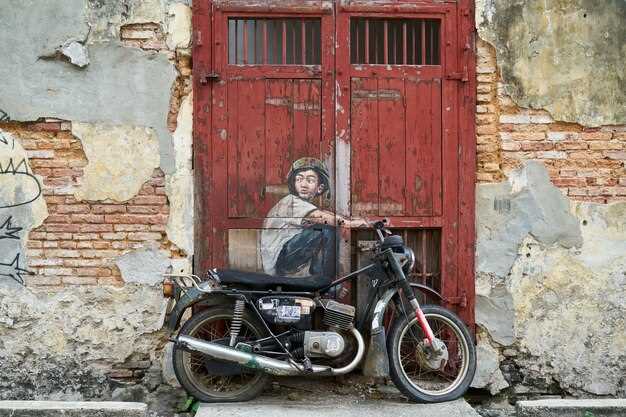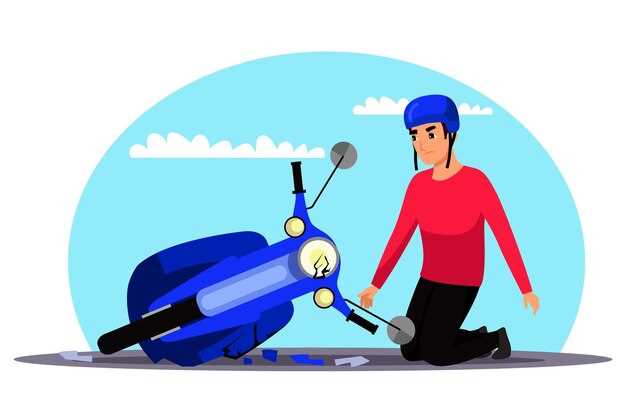
Rebuilding a salvage motorcycle can be an enticing project for avid riders and mechanics alike. The allure of restoring a damaged bike to its former glory often tempts enthusiasts to dive into the world of repairs and customizations. However, whether it’s truly worth the time, effort, and investment hinges on various factors that merit careful consideration.
The first aspect to consider is the extent of the damage. Some salvage motorcycles may only require minor repairs, making the rebuilding process relatively straightforward and potentially cost-effective. In such cases, the satisfaction derived from a successful rebuild, coupled with the thrill of riding a unique machine, can be significant. Conversely, more extensive damage, especially involving critical components like the frame or engine, can lead to costly repairs that may not justify the investment.
Additionally, evaluating the specific make and model of the motorcycle plays a crucial role in deciding whether a rebuild is worthwhile. Certain motorcycles have a strong aftermarket support and availability of parts, which simplifies the repair process and adds value to the finished product. On the other hand, niche or discontinued models might present challenges in sourcing components, making the rebuilding process more arduous and expensive.
Ultimately, the decision to repair or rebuild a salvage motorcycle is not merely about financial viability; it also encompasses personal passion and the potential for creative expression. Whether it results in a dedicated project bike or a profitable resale opportunity, understanding the intricacies of the process can lead to a rewarding experience for motorcycle enthusiasts.
Assessing the Cost vs. Value of a Salvage Motorcycle
When considering a salvage motorcycle, the first step is to evaluate the cost of rebuilding versus the potential value it can offer. A thorough cost assessment should include the purchase price, necessary parts, and labor expenses, which can significantly impact the overall investment.
Start by analyzing the purchase price of the salvage motorcycle. Research similar models to determine a fair valuation. Once you have this baseline, factor in the condition of the bike and the extent of repairs needed. A minor cosmetic repair may cost less than major engine work, which can escalate expenses rapidly.
Next, create a list of necessary repairs. Source costs for replacement parts, and consider whether you will perform the work yourself or hire a professional. Labor costs can quickly add up; thus, if you’re rebuilding on your own, estimate the time you will invest. This time could translate into savings, but also reassess if your skills match the required work.
Additionally, research the market value once the motorcycle is rebuilt. Look at completed sales for similar models in good condition. This will help you understand the potential return on your investment and clarify if the rebuild is justified.
Finally, assess any hidden costs, such as potential unforeseen repairs, increased insurance rates, and the long-term maintenance of a rebuilt motorcycle. Weigh these against the emotional and practical value the bike holds for you personally. If the value exceeds the costs, a salvage motorcycle may indeed be worth the effort to rebuild.
Understanding the Repair Process for Salvage Motorcycles

Repairing a salvage motorcycle involves several critical steps that ensure the vehicle becomes roadworthy again. The first step is to assess the extent of the damage. This requires a thorough inspection of both the cosmetic and mechanical aspects of the motorcycle. Check for structural integrity, including the frame, engine, and key components such as the suspension and brakes.
Once the damage has been evaluated, the next phase is to establish a budget for the repair. This includes estimating the costs of parts, labor, and any additional services, such as inspections or certifications that may be required to register the motorcycle once repaired. Pricing out parts can be significant, as salvage motorcycles often need a mix of new and used components.
After budgeting, gather the necessary replacement parts. Whether sourcing from specialized salvage yards, online marketplaces, or dealerships, ensure that these components are compatible with your motorcycle’s make and model. Quality is essential to guarantee the long-term functionality and safety of the repaired bike.
With parts in hand, the repair process can commence. A systematic approach is crucial. Start by addressing the most critical systems, such as the engine and brakes, before moving on to cosmetic repairs. Follow the manufacturer’s guidelines and use the appropriate tools to ensure all repairs are done correctly and safely.
Throughout the repair process, documentation is vital. Keep records of all work done, parts replaced, and any inspections performed. This documentation not only helps in the registration process but can also enhance the motorcycle’s resale value in the future. Finally, once the repairs are complete, conduct a comprehensive test ride to verify that everything operates smoothly and safely.
Navigating Legal and Insurance Requirements for Rebuilt Bikes

When considering the rebuild of a salvage motorcycle, understanding the legal and insurance requirements is crucial. Each state has specific laws that govern the process of rebuilding and registering a salvaged bike. Typically, the first step involves obtaining the necessary documentation from the previous owner or the insurance company, proving ownership and the motorcycle’s salvage status.
After acquiring the motorcycle, the next step is to perform the rebuild according to local regulations. Many states require a comprehensive inspection by a certified mechanic or an official inspector to ensure that the rebuilt motorcycle meets safety and environmental standards. This inspection is essential for obtaining a rebuilt title, which distinguishes the motorcycle from a standard one.
Once the motorcycle passes inspection, the owner can apply for a rebuilt title through the local Department of Motor Vehicles (DMV). This process may include submitting paperwork that details the repair process, receipts for parts, and the inspection report. It’s important to keep thorough records of all repairs and modifications made during the rebuild, as these may be required for legal verification.
Insurance is another critical factor for rebuilt bikes. Many insurance companies view salvaged motorcycles as high-risk due to their past damage. It’s advisable to shop around for insurance providers who specialize in salvaged or rebuilt bikes. Insurers may require additional documentation and a professional evaluation to determine the bike’s value before issuing a policy.
In summary, navigating the legal and insurance requirements for a rebuilt motorcycle involves understanding state regulations, obtaining inspections, and securing an appropriate insurance policy. By staying informed and organized throughout the process, motorcycle enthusiasts can successfully ride their rebuilt bikes with confidence.
